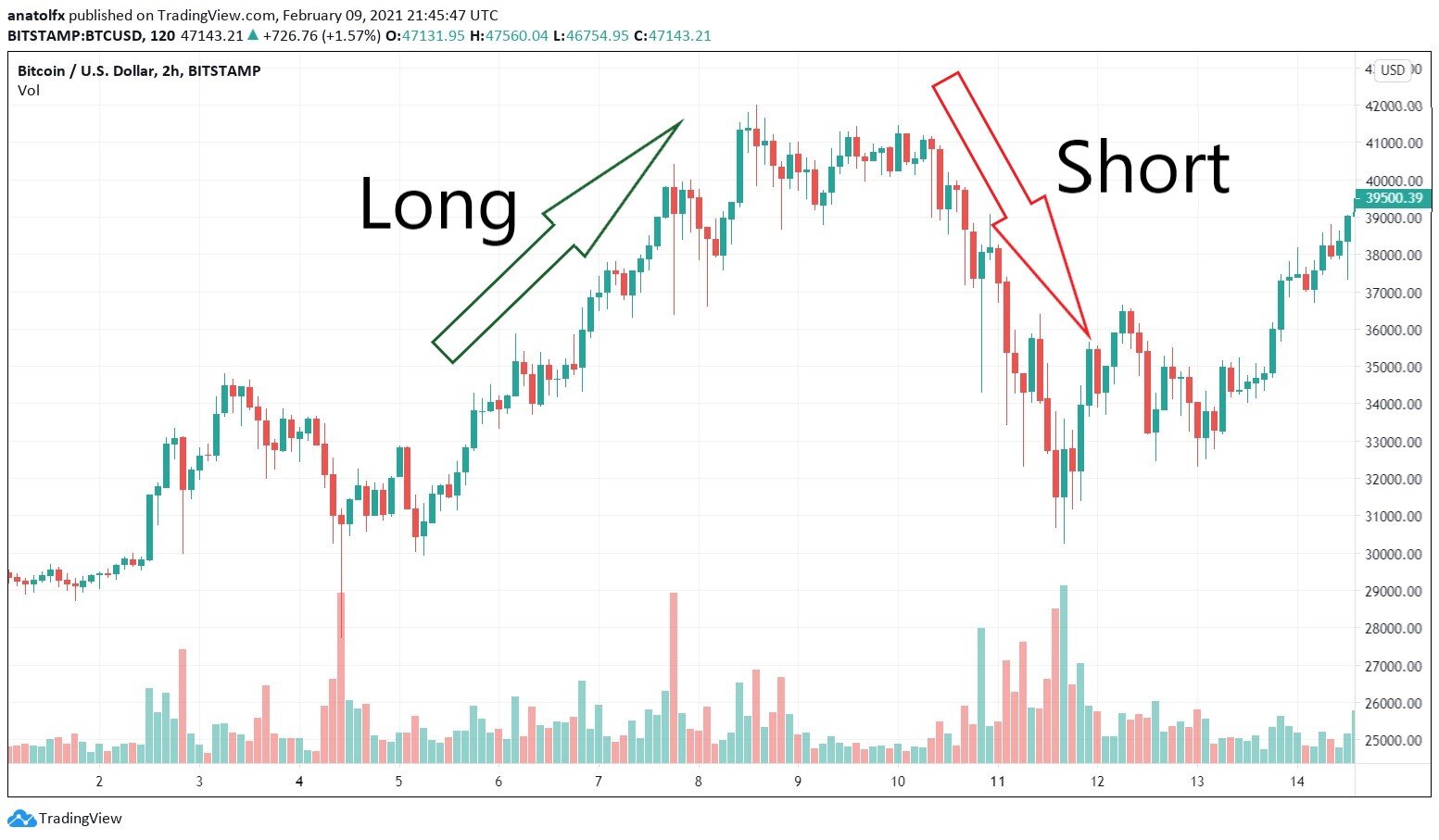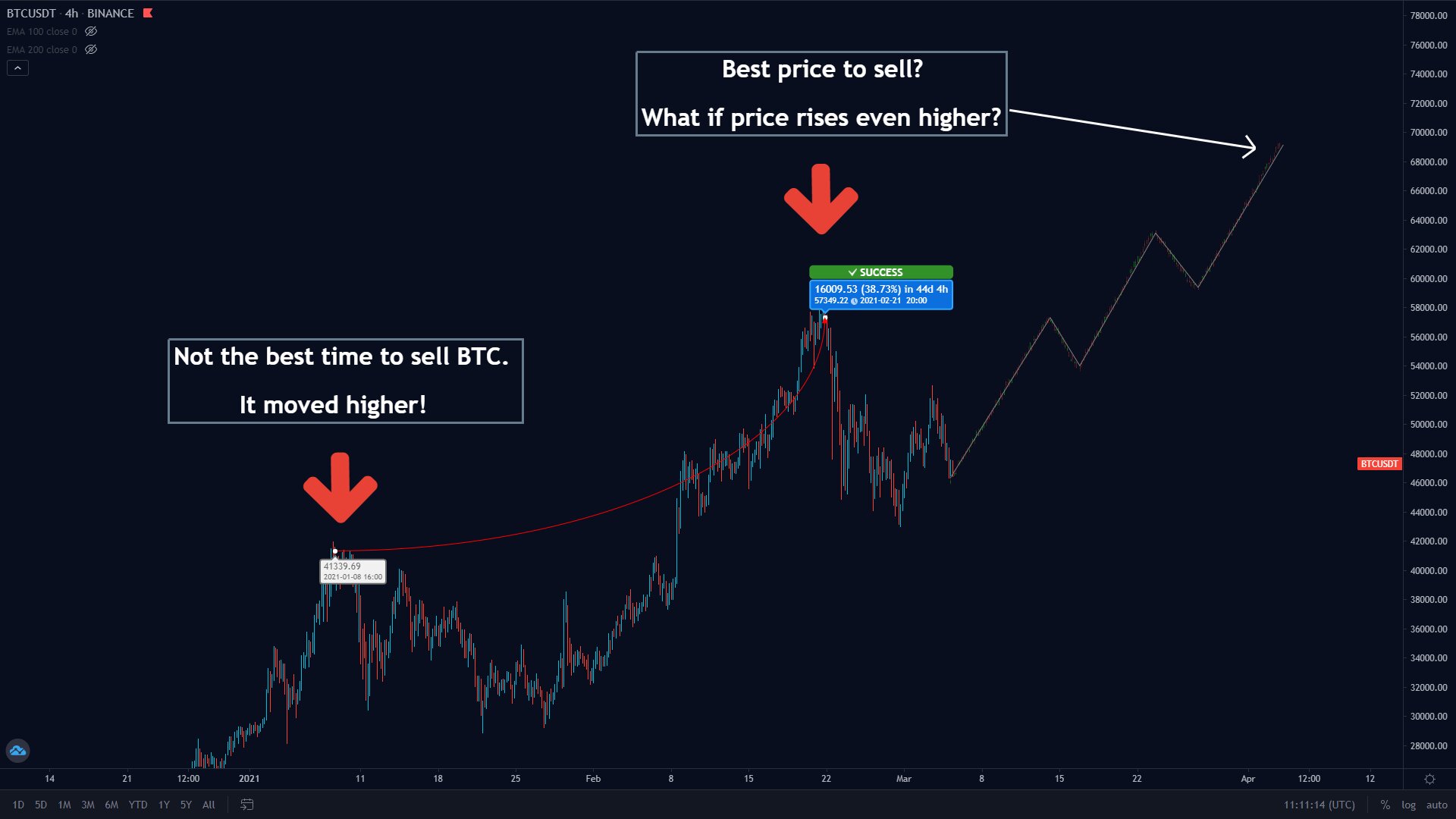Introduction
Cryptocurrency has gained significant popularity in recent years, with many people investing and trading in this digital form of currency. While it offers the potential for high returns and decentralized transactions, it also comes with its fair share of risks. Understanding these risks is essential for anyone considering diving into the world of cryptocurrency.
One of the most significant risks associated with cryptocurrencies is their volatility. Unlike traditional fiat currencies, cryptocurrencies can experience wild price fluctuations, sometimes within a matter of hours. This volatility can lead to significant gains for investors, but it also exposes them to substantial losses if the market suddenly turns against them. The unpredictable nature of cryptocurrency prices makes it a high-risk investment.
Another risk factor is the regulatory landscape surrounding cryptocurrencies. As a relatively new and rapidly evolving asset class, the regulatory framework governing cryptocurrencies is still in its infancy. Different governments have varying policies when it comes to cryptocurrencies, from embracing them to imposing strict regulations. These regulatory uncertainties can impact investor confidence and create a challenging legal environment for cryptocurrency businesses.
Security risks are also prevalent in the cryptocurrency realm. Blockchain technology, which underpins cryptocurrencies, is generally considered secure, but individual wallets and exchanges can be vulnerable to hacking attempts. Many high-profile hacking incidents have resulted in the loss of millions of dollars worth of digital assets. Therefore, it is crucial for investors to take appropriate security measures, such as using hardware wallets and secure exchanges, to mitigate these risks.
One of the key challenges facing cryptocurrencies is the lack of mainstream adoption. While some industries and businesses have started accepting cryptocurrencies as a form of payment, it is still not widely accepted. Limited usability and acceptance hinder the widespread adoption of cryptocurrencies, leaving them vulnerable to market fluctuations and external factors.
Furthermore, technological risks are inherent in cryptocurrencies. As technology evolves, there is always the possibility of bugs, vulnerabilities, and even complete failure of a cryptocurrency project. Investors need to conduct thorough research on the technology behind a cryptocurrency before investing to assess its viability and long-term prospects.
Volatility
One of the most significant risks associated with cryptocurrency is its extreme volatility. Unlike traditional fiat currencies, cryptocurrencies are not backed by any tangible assets or central authority. As a result, their value is subject to rapid and drastic changes based on market sentiment, regulatory developments, and other external factors.
The extreme price volatility of cryptocurrencies can result in significant gains for investors, but it also exposes them to substantial losses. The value of a cryptocurrency can skyrocket one day and plummet the next, making it a high-risk investment option.
One of the main drivers of cryptocurrency volatility is speculation. Due to their relatively short history and lack of fundamental valuation metrics, cryptocurrencies are prone to speculative trading. News events, market trends, and even social media hype can significantly influence the price of a cryptocurrency, leading to sudden and unpredictable price movements.
Another factor contributing to cryptocurrency volatility is the lack of liquidity. Compared to traditional financial markets, the cryptocurrency market is relatively small and fragmented. This can amplify price swings, as even a relatively small buy or sell order can have a significant impact on the market.
Furthermore, the absence of regulatory oversight and investor protection mechanisms adds to the volatility of cryptocurrencies. Without strict regulations and safeguards, the market is susceptible to manipulation and fraudulent activities. Pump and dump schemes, where a group of individuals artificially inflate the price of a cryptocurrency before selling their holdings, can lead to severe price fluctuations.
It’s important for investors to recognize and understand the inherent volatility of cryptocurrencies before entering the market. Diversification and risk management strategies can help mitigate the impact of sudden price swings. Additionally, setting clear investment goals and avoiding impulsive decision-making can help investors navigate the volatile cryptocurrency market.
In summary, the extreme volatility of cryptocurrencies poses notable risks to investors. While it presents an opportunity for significant gains, it also exposes investors to substantial losses. Understanding and managing this volatility is crucial for those considering investing in the cryptocurrency market.
Regulatory Risks
The regulatory landscape surrounding cryptocurrencies is still evolving, which creates risks and uncertainties for investors and businesses involved in the cryptocurrency ecosystem.
One of the primary concerns is the lack of consistent regulations across different jurisdictions. Cryptocurrencies operate across borders, and each country has its own approach to regulating them. Some countries embrace cryptocurrencies and provide a supportive regulatory framework, while others have imposed strict regulations or even banned their use altogether.
The absence of uniform regulations makes it challenging for businesses operating in the cryptocurrency space to navigate legal requirements and comply with local laws. This regulatory uncertainty can hinder innovation, deter institutional investors, and limit the widespread adoption of cryptocurrencies.
Furthermore, the regulatory landscape can quickly change. Governments and regulatory bodies are continuously assessing and revising their stance on cryptocurrencies as they better understand the potential risks and benefits. This dynamic environment makes it difficult for businesses and investors to plan and make informed decisions.
Another regulatory risk is the potential for increased scrutiny and intervention. As cryptocurrencies gain more mainstream attention and market capitalization, regulatory bodies are paying closer attention and becoming more involved in the industry. This can lead to increased regulatory oversight, compliance requirements, and potential limitations on the use and trading of cryptocurrencies.
Moreover, regulatory actions can have a significant impact on market sentiment and price volatility. News of regulatory crackdowns or restrictions on cryptocurrencies can trigger panic selling and result in substantial price declines. Conversely, positive regulatory developments, such as the recognition of cryptocurrencies as legal tender or the approval of cryptocurrency-based financial products, can boost market confidence and drive prices up.
Investors and businesses involved in cryptocurrencies must stay updated with the evolving regulatory landscape and take measures to ensure compliance with applicable laws. Engaging with regulatory authorities, participating in industry associations, and seeking legal counsel are essential steps to mitigate regulatory risks.
In summary, the regulatory risks associated with cryptocurrencies stem from the lack of consistent regulations, the potential for changing regulatory environments, and increased scrutiny. Understanding and adapting to the evolving regulatory landscape is crucial for individuals and businesses involved in the cryptocurrency ecosystem.
Security Risks
Security risks are a significant concern in the world of cryptocurrencies, given their digital nature and the potential for unauthorized access and theft. While blockchain technology itself is regarded as secure, individual wallets, exchanges, and user practices can introduce vulnerabilities that can be exploited by malicious actors.
One of the most common security risks in the cryptocurrency ecosystem is hacking. Hackers target cryptocurrency exchanges, wallets, and even individual users to gain access to private keys or passwords, allowing them to steal digital assets. Numerous high-profile hacking incidents have resulted in the loss of millions of dollars’ worth of cryptocurrencies.
Phishing attacks are another prevalent security risk. Hackers employ social engineering techniques to trick individuals into disclosing their login credentials or private keys. These phishing scams can come in the form of deceptive emails, fake websites, or even malicious mobile apps.
Weak security practices by users also contribute to security risks. Many individuals fail to properly secure their wallets or use weak passwords that can be easily guessed. Additionally, sharing private keys or storing them in insecure locations leaves digital assets vulnerable to theft.
Furthermore, the security of cryptocurrency exchanges is critical, as they serve as the primary avenue for trading and storing cryptocurrencies. However, some exchanges have been subject to hacking or internal fraud, resulting in the loss of customer funds. Therefore, it is crucial for users to carefully choose reputable and secure exchanges for their cryptocurrency transactions.
To mitigate security risks, individuals should follow best practices. This includes using reputable wallets, securing private keys offline, enabling two-factor authentication, and staying vigilant against phishing attempts. Regularly updating software and using reputable antivirus and anti-malware solutions can also enhance security.
Institutional players in the cryptocurrency industry also play a role in improving security measures. Exchanges and wallet providers should prioritize robust security protocols, including regular security audits, multi-signature authentication, and cold storage of funds to minimize the risk of unauthorized access.
In summary, security risks in the cryptocurrency ecosystem arise from hacking, phishing attacks, weak user practices, and vulnerabilities in exchanges. Recognizing and implementing proper security measures is essential for individuals and organizations involved in cryptocurrencies to safeguard their digital assets.
Lack of Mainstream Adoption
Despite the growing popularity of cryptocurrencies, they still face a significant challenge when it comes to mainstream adoption. While there has been some progress in terms of acceptance and usage, cryptocurrencies are still far from being widely adopted as a mainstream form of payment or investment.
One of the main obstacles to mainstream adoption is the limited usability of cryptocurrencies. While there are merchants and businesses that accept cryptocurrencies as payment, their availability is still relatively limited compared to traditional fiat currencies. The lack of widespread acceptance makes it challenging for individuals to use cryptocurrencies for their everyday transactions.
Another factor hindering mainstream adoption is the complexity of cryptocurrency technology. The underlying blockchain technology and the technical knowledge required to securely manage and transact with cryptocurrencies can be daunting for the average person. This lack of user-friendly interfaces and intuitive applications makes it difficult for cryptocurrency novices to enter the market.
Moreover, the volatility and price fluctuations of cryptocurrencies also deter mainstream adoption. The unpredictable nature of cryptocurrency prices can make individuals hesitant to use them as a stable medium of exchange. People are accustomed to traditional currencies that have a more stable value, which makes them more reluctant to adopt cryptocurrencies for their daily transactions.
Additionally, the regulatory uncertainty surrounding cryptocurrencies creates a barrier to mainstream adoption. As mentioned earlier, different countries have different regulations, and some have even banned cryptocurrencies outright. This lack of regulatory clarity and potential legal consequences make businesses cautious about accepting cryptocurrencies as a form of payment.
Furthermore, the lack of consumer protection and recourse in case of fraud or theft also hampers mainstream adoption. Unlike traditional financial systems, there is no central authority or institution to provide safeguards and resolve disputes related to cryptocurrency transactions. This lack of investor protection can make individuals wary of using cryptocurrencies for their financial activities.
Overall, the lack of mainstream adoption of cryptocurrencies can be attributed to limited usability, technical complexity, volatility, regulatory uncertainty, and lack of consumer protection. Addressing these challenges is essential for cryptocurrencies to gain wider acceptance and become a more integral part of the global financial system.
Technology Risks
While blockchain technology is highly regarded for its potential to transform various industries, cryptocurrencies themselves are not without technological risks. These risks stem from the underlying technology and the potential for technical failures or vulnerabilities.
One of the primary technology risks associated with cryptocurrencies is the possibility of bugs or coding errors within the blockchain protocol or the smart contracts that govern transactions. These errors can compromise the security and integrity of the cryptocurrency system, potentially leading to the loss or manipulation of funds.
Additionally, cryptocurrencies can be susceptible to hacking attempts or attacks on the underlying infrastructure. While blockchain technology itself is considered secure, individual wallets, exchanges, and other platforms that interact with cryptocurrencies can be vulnerable to exploitation. Hackers can gain unauthorized access and steal funds or manipulate transactions.
Furthermore, the scalability of blockchain technology is a significant concern. As the number of transactions on a blockchain network increases, the processing time and costs can become prohibitive. This scalability challenge is particularly relevant for popular cryptocurrencies like Bitcoin, where high transaction volumes can result in delays and increased fees.
Moreover, the evolving nature of technology poses risks for cryptocurrencies. Rapid advancements and changes in technology can render existing cryptocurrencies obsolete or less competitive. New and more efficient cryptocurrencies can emerge, leading to a decline in the value and utility of older ones.
Interoperability and compatibility issues between different blockchains can also pose technological risks. As cryptocurrencies continue to proliferate, there is a need for seamless interoperability between various blockchain networks. Without interoperability, transferring value across different cryptocurrencies becomes complex and inefficient, limiting their practicality.
It is crucial for investors and users of cryptocurrencies to conduct thorough research on the technology behind a cryptocurrency before investing or relying on it. Understanding the architecture, consensus mechanism, and security features of a cryptocurrency can help assess its technological robustness and long-term viability.
Furthermore, developers and cryptocurrency projects must prioritize security measures and regularly audit their code to identify and address any vulnerabilities or potential weaknesses. Engaging with the broader blockchain community and participating in bug bounty programs can help identify and remediate any technological risks before they are exploited.
In summary, technology risks in the cryptocurrency space arise from coding errors, vulnerabilities in wallets and exchanges, scalability concerns, rapid technological advancements, and interoperability issues. Awareness of these risks and proactive measures to address them are crucial for the sustainable growth and adoption of cryptocurrencies.
Market Manipulation
Market manipulation is a significant risk in the cryptocurrency market, primarily due to its decentralized and relatively unregulated nature. The absence of stringent oversight and investor protections can leave the market vulnerable to manipulative practices that can affect the price and stability of cryptocurrencies.
One common form of market manipulation is known as “pump and dump” schemes. In these schemes, a group of individuals collude to artificially inflate the price of a specific cryptocurrency by spreading positive news, creating fake demand, and enticing other investors to buy. Once the price has been driven up, the manipulators sell their holdings, causing the price to plummet, leaving other investors with significant losses.
Manipulators can also engage in “spoofing” and other forms of deceptive trading activities. This involves placing large buy or sell orders with the intention of creating a false impression of market supply or demand. By manipulating the perception of market conditions, these individuals can influence the price and provoke a response from other traders, only to cancel the orders once their desired outcome is achieved.
Furthermore, the relatively low trading volumes of some cryptocurrencies make them susceptible to market manipulation. With fewer active traders, it becomes easier for manipulators to influence prices and execute trades that impact the market more significantly.
The lack of transparency in the cryptocurrency market also contributes to market manipulation risks. While blockchain technology provides transparency for transactions, identifying the actual individuals behind manipulative activities can be difficult. Cryptocurrency exchanges often operate with limited disclosure requirements, making it challenging to detect and take action against manipulators.
Efforts to combat market manipulation in the cryptocurrency space include increasing transparency in trading data, implementing stricter regulations, and improving surveillance mechanisms. Regulatory bodies and cryptocurrency exchanges are working towards implementing measures to identify and penalize manipulative behaviors.
However, it is essential for investors to exercise caution and be aware of the risks. Conducting thorough research, diversifying investments, and avoiding making decisions based solely on hype or sudden market movements can help mitigate the impact of market manipulation.
In summary, market manipulation is a significant risk in the cryptocurrency market that can distort prices and impact investor confidence. Increasing transparency, implementing stricter regulations, and adopting surveillance mechanisms are crucial steps towards minimizing the risks associated with manipulative practices and achieving a more fair and transparent market environment.
Exchange Risks
Exchanges play a crucial role in the cryptocurrency ecosystem, allowing users to buy, sell, and trade cryptocurrencies. However, they also pose certain risks that investors and users need to be aware of.
One of the primary risks associated with exchanges is hacking. Cryptocurrency exchanges are attractive targets for hackers due to the large amounts of digital assets they hold. Hackers can exploit vulnerabilities in exchange infrastructure or individual user accounts to gain unauthorized access to funds. Numerous high-profile hacking incidents have resulted in the loss of millions of dollars’ worth of cryptocurrencies.
Another risk arises from the internal practices and security measures employed by exchanges. Poor security protocols, inadequate Know Your Customer (KYC) procedures, and lax internal controls can expose exchanges and their users to the risk of internal fraud or theft. Insider trading by exchange employees can also impact the fairness and integrity of the trading environment.
Furthermore, liquidity risks are prevalent in the cryptocurrency exchange ecosystem. Some smaller or less reputable exchanges may have low trading volumes, making it challenging to execute trades at desired prices. These illiquid markets can also increase the risk of price manipulation and limit the ability of investors to enter or exit positions smoothly.
Operational risks can also arise from technical glitches or system failures on the exchange platforms. Issues such as unexpected downtime, slow response times, or order execution errors can cause inconvenience and financial losses for traders. It is important for users to choose exchanges with a proven track record of reliability and uptime.
Moreover, regulatory risks associated with exchanges must be considered. As mentioned earlier, regulations around cryptocurrencies are still evolving, and exchanges must comply with varying levels of regulatory oversight. Increased regulatory scrutiny or changes in regulatory requirements can impact the operations, liquidity, or even the viability of certain exchanges.
Investors and users can mitigate exchange-related risks by taking certain precautions. It is vital to research and choose reputable and well-established exchanges with a strong track record of security and reliability. Implementing strong security measures, such as two-factor authentication and using hardware wallets, can also enhance the security of funds held on exchanges.
Furthermore, spreading investments across multiple exchanges and avoiding keeping large amounts of cryptocurrency on exchanges for extended periods can minimize exposure to potential losses from hacks or internal fraud. Regularly monitoring account activity and enabling withdrawal notifications can help detect any unauthorized activity promptly.
In summary, exchange risks in the cryptocurrency ecosystem include hacking, internal fraud, liquidity issues, operational glitches, and regulatory challenges. Understanding and mitigating these risks is crucial for individuals and businesses participating in cryptocurrency exchanges to protect their funds and investments.
Scams and Frauds
The rise of cryptocurrencies has unfortunately given rise to a variety of scams and frauds targeting unsuspecting investors. The decentralized and pseudonymous nature of cryptocurrency transactions makes it an appealing playground for scammers and fraudsters. It is crucial for individuals to be aware of these risks and take necessary precautions to protect themselves.
One common type of scam in the cryptocurrency space is the Ponzi scheme. In Ponzi schemes, individuals are promised high returns on their investments, often through referral programs or promises of guaranteed profits. However, these schemes rely on new investor funds to pay existing investors and eventually collapse, leaving many participants with substantial losses.
Initial Coin Offerings (ICOs) have also been a popular avenue for scams. Fraudulent ICOs present enticing investment opportunities, raising funds for projects that either turn out to be non-existent or fail to deliver on their promises. Investors need to conduct thorough due diligence and carefully scrutinize the legitimacy and viability of any ICO before participating.
Phishing scams are another prevalent method used by fraudsters. These scams involve perpetrators impersonating reputable platforms, exchanges, or wallet providers in an attempt to trick individuals into divulging their login credentials or private keys. Unsuspecting victims may unknowingly provide access to their accounts, leading to theft of their funds.
It is important to be cautious of unsolicited investment advice, especially from individuals or groups promising guaranteed profits or exclusive access to investment opportunities. These “pump and dump” groups manipulate the price of specific cryptocurrencies to profit at the expense of unsuspecting investors who have bought in based on false promises or recommendations.
Fake cryptocurrency exchanges are also a significant risk. Fraudulent exchanges mimic the appearance and functionality of legitimate exchanges but are designed solely to steal user funds. It is crucial to verify the reputation and legitimacy of an exchange before depositing funds or trading on the platform.
To protect themselves from scams and frauds, individuals should exercise due diligence and follow some essential guidelines. This includes researching and verifying the credibility and track record of companies, wallets, and exchanges before engaging with them. Being wary of too-good-to-be-true investment opportunities and avoiding sharing sensitive information online can also minimize the risk of falling victim to scams.
Staying informed about the latest scams and frauds in the cryptocurrency space is also crucial. Being aware of common scam tactics and red flags can help individuals recognize and avoid potential risks. Utilizing secure wallets, enabling two-factor authentication, and regularly updating software can further enhance security.
Overall, scams and frauds in the cryptocurrency industry are prevalent due to its decentralized and pseudonymous nature. Awareness, caution, and adherence to best practices are essential for individuals to protect themselves and their investments from falling victim to these fraudulent activities.
Lack of Investor Protection
One significant concern in the cryptocurrency ecosystem is the lack of investor protection compared to traditional financial markets. Cryptocurrencies operate outside the jurisdiction of most regulatory bodies, leaving investors with limited recourse and safeguards in case of fraud, theft, or other forms of misconduct.
Unlike traditional financial systems, cryptocurrencies do not have a central authority or government backing to ensure investor protection. Transactions are pseudonymous and irreversible, making it challenging to trace and recover funds in the event of fraudulent activities.
The absence of investor protection mechanisms opens the door for various risks. Hacking incidents, scams, and fraudulent Initial Coin Offerings (ICOs) can lead to substantial financial losses for investors. Once funds are stolen or lost, the chances of recovery are slim, and investors may have little legal recourse.
Moreover, the decentralized and borderless nature of cryptocurrencies poses challenges when it comes to regulatory oversight and cross-border enforcement of investor protection. Jurisdictional complexities and varying approaches to cryptocurrencies make it difficult for regulators to provide consistent protection measures for investors.
Additionally, the lack of transparency in cryptocurrency markets can pose risks to investors. Without adequate regulation and reporting requirements, it is challenging to obtain accurate and complete information about the financial health, operations, and track record of cryptocurrency projects and exchanges. This lack of transparency makes it difficult for investors to assess the credibility and viability of their investments.
Efforts are underway to address the lack of investor protection in the cryptocurrency space. Some jurisdictions have started implementing regulations to provide a level of oversight and protect investors. However, progress is still in its early stages, and regulatory frameworks are not yet uniform or globally cohesive.
While investors may take certain precautions to protect themselves, such as conducting thorough due diligence, diversifying their investments, and using secure wallets, these measures can only go so far in the absence of comprehensive investor protection regulations.
It is crucial for individuals participating in the cryptocurrency market to approach their investments with caution and consider their risk tolerance. Understanding the inherent risks and limitations of the cryptocurrency ecosystem is essential to make informed decisions and manage expectations.
In summary, the lack of investor protection in the cryptocurrency ecosystem exposes investors to potential fraud, theft, and other risks. Addressing this concern requires the development and implementation of regulatory frameworks that provide consistent protection measures for investors while still fostering innovation and growth within the cryptocurrency industry.
Environmental Concerns
As the popularity and usage of cryptocurrencies continue to grow, so do concerns about their environmental impact. The process of mining cryptocurrencies, particularly Bitcoin, requires immense computational power and energy consumption, which has raised questions about sustainability and carbon footprint.
The mining process involves solving complex mathematical puzzles to validate and add transactions to the blockchain. This process requires powerful computer hardware and substantial amounts of electricity. As a result, the energy consumption of the cryptocurrency industry is substantial, often surpassing that of entire nations.
One environmental concern is the reliance on non-renewable sources of energy for cryptocurrency mining. In regions where mining activity is prevalent, such as China, a significant portion of the energy used is generated from fossil fuels. The carbon emissions associated with fossil fuel dependency contribute to climate change and environmental degradation.
Furthermore, the increasing difficulty of mining cryptocurrencies drives the need for more powerful and energy-consuming hardware. This leads to a constant cycle of upgrading and energy consumption, which further exacerbates the environmental impact of cryptocurrency mining.
On a positive note, there have been efforts to address environmental concerns within the cryptocurrency industry. The concept of “green mining” has emerged, emphasizing the use of renewable energy sources for cryptocurrency mining. Some mining operations have moved towards utilizing solar or wind energy to power their mining rigs, reducing the carbon footprint associated with their activities.
Additionally, technological advancements are being explored to make the mining process more energy-efficient. Proof-of-Stake (PoS) algorithms, for example, require less computational power and energy consumption compared to the traditional Proof-of-Work (PoW) used by Bitcoin. The transition to PoS can help mitigate the environmental impact of cryptocurrency mining.
Education and awareness about the environmental impact of cryptocurrencies are also crucial. Encouraging users and investors to consider the environmental aspect when engaging with cryptocurrencies can drive demand for greener alternatives and sustainable practices within the industry.
In summary, the energy-intensive nature of cryptocurrency mining raises significant environmental concerns. The heavy reliance on non-renewable energy sources and the carbon emissions associated with mining operations contribute to environmental degradation. However, there are ongoing efforts towards promoting green mining and exploring energy-efficient alternatives to mitigate the environmental impact of cryptocurrencies.
Conclusion
Cryptocurrencies offer exciting opportunities for investors and the potential for decentralized transactions. However, it is important to be aware of the risks and challenges that come with this emerging asset class.
The volatility of cryptocurrencies poses a significant risk, with prices capable of experiencing rapid and unpredictable fluctuations. Regulatory risks and the lack of mainstream adoption also present obstacles that can impact investor confidence and limit the widespread use of cryptocurrencies.
Security risks, including hacking and phishing attacks, highlight the importance of taking proper precautions to protect digital assets. Additionally, technology risks, such as coding errors and scalability challenges, remind investors to conduct thorough research and remain vigilant about the underlying technology behind cryptocurrencies.
Market manipulation is an ever-present risk, accentuating the need to be cautious and educated about potential scams and frauds. Similarly, the integrity of exchanges must be carefully considered, along with the lack of investor protection measures offered in the cryptocurrency space.
Furthermore, environmental concerns surrounding the energy consumption and carbon footprint of cryptocurrency mining call for greater sustainability efforts and exploration of greener alternatives.
Considering and managing these risks is crucial for individuals and businesses involved in the cryptocurrency ecosystem. Conducting thorough research, staying informed, and employing caution and security measures are essential steps to minimize risks and protect investments.
While the risks associated with cryptocurrencies are significant, it is important to note that innovations and advancements are continuously occurring in the cryptocurrency industry. Regulatory frameworks are evolving, security measures are improving, and efforts are being made to address environmental concerns. These factors contribute to a more stable and sustainable future for cryptocurrencies as they become more integrated into mainstream financial systems.
As the cryptocurrency landscape continues to evolve, it is imperative for investors to stay informed, adapt to changing circumstances, and make informed decisions to maximize the potential benefits while mitigating the associated risks.

























